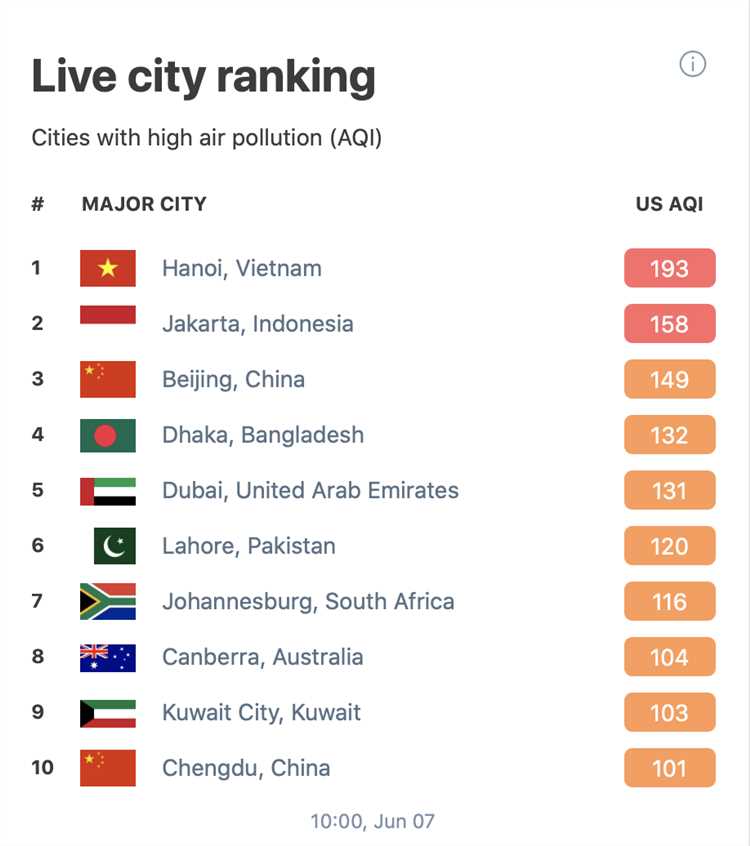
When it comes to pollution, some cities around the world stand out for their alarming levels of air and water contamination. The consequences of such pollution are far-reaching, affecting not only the environment but also the health and well-being of the people who call these cities home. Identifying the most polluted city in the world is not an easy task, as pollution levels can vary depending on different factors. However, certain cities consistently rank among the top in terms of pollution.
One city that frequently appears on lists of the most polluted cities is New Delhi, the capital of India. With its booming population and rapid industrialization, New Delhi struggles with severe air pollution, particularly during the winter months. The city’s air quality is frequently classified as hazardous, with high levels of particulate matter and pollutants. The pollution in New Delhi has significant health implications, leading to respiratory problems and contributing to the prevalence of chronic diseases among its residents.
Another city known for its pollution issues is Beijing, the capital of China. Due to its large population and heavy reliance on coal for energy, Beijing experiences high levels of smog and poor air quality. The city has implemented various measures to tackle the problem, including strict emission standards and the promotion of electric vehicles. Despite these efforts, Beijing continues to face significant pollution challenges, affecting the quality of life for its residents.
- The World’s Most Polluted City
- Causes of Pollution
- 1. Industrial Activities
- 2. Vehicle Emissions
- 3. Deforestation
- 4. Agricultural Practices
- 5. Improper Waste Disposal
- Effects of Pollution on Health
- 1. Respiratory Diseases
- 2. Cardiovascular Health Issues
- Measures to Reduce Pollution
- 1. Promoting Renewable Energy Sources
- 2. Improving Public Transportation
- 3. Implementing Strict Emission Standards
- 4. Promoting Recycling and Waste Management
- 5. Creating Green Spaces
- Efforts to Combat Pollution
- 1. Improving Public Transportation
- 2. Implementing Strict Emission Standards
- Future of the Most Polluted City
- The Need for Immediate Action
- Collaborative Efforts and International Support
- Q&A
- Which city is currently considered the most polluted in the world?
- What are the main sources of pollution in New Delhi?
- What are the health effects of living in a highly polluted city like New Delhi?
- What measures are being taken to address the pollution problem in New Delhi?
- Are there any other cities in the world with high pollution levels?
- Which city is the most polluted in the world?
- What are the main causes of air pollution in cities?
The World’s Most Polluted City
Delhi’s pollution problem is a result of a combination of factors, including vehicular emissions, industrial pollution, and the widespread burning of crops and waste. These factors contribute to high levels of particulate matter, nitrogen dioxide, and other harmful pollutants in the city’s air.
The consequences of Delhi’s extreme pollution levels are severe. The city experiences frequent smog episodes, which not only reduce visibility but also have a significant impact on the health of its residents. Air pollution has been linked to a range of health issues, including respiratory problems, cardiovascular diseases, and even premature death.
Efforts have been made to address Delhi’s pollution problem, but progress has been slow. The government has introduced measures such as restricting vehicle emissions, promoting clean energy sources, and implementing stricter industrial regulations. However, the scale of the problem requires sustained and coordinated action from all stakeholders.
It is not just the responsibility of the government, but also of individuals to contribute to efforts in reducing pollution. Measures such as carpooling, using public transportation, and adopting sustainable practices can all make a difference in improving Delhi’s air quality.
As the world’s most polluted city, Delhi serves as a stark reminder of the urgent need to tackle pollution on a global scale. It is a challenge that requires collaboration and commitment from all nations, as the health and well-being of communities around the world depend on it.
| Rank | City | Country | Pollution Index |
|---|---|---|---|
| 1 | Delhi | India | 98.6 |
| 2 | Lahore | Pakistan | 98.3 |
| 3 | Kolkata | India | 98.2 |
| 4 | Mumbai | India | 96.5 |
| 5 | Beijing | China | 95.5 |
| 6 | Shanghai | China | 95.4 |
Causes of Pollution
Pollution is caused by various factors and can have detrimental effects on the environment and human health. Here are some of the main causes of pollution:
1. Industrial Activities
Industrial activities, such as manufacturing and power generation, are major contributors to pollution. Industries release harmful chemicals and pollutants into the air, water, and soil, leading to air pollution, water pollution, and soil contamination.
2. Vehicle Emissions
The increasing number of vehicles on the road has resulted in high levels of air pollution. Vehicle emissions release pollutants such as carbon monoxide, nitrogen oxides, and particulate matter, which contribute to the deterioration of air quality.
3. Deforestation
Deforestation, primarily driven by agricultural expansion and urbanization, leads to increased pollution. Trees play a vital role in absorbing carbon dioxide and producing oxygen. With fewer trees, the balance of gases in the atmosphere is disrupted, contributing to air pollution.
4. Agricultural Practices
Intensive farming practices and the use of chemical fertilizers and pesticides contribute to pollution. These chemicals can contaminate water sources, soil, and air, posing a risk to human health and ecosystems.
5. Improper Waste Disposal
Improper waste disposal, including improper handling and disposal of toxic waste, leads to pollution. Landfills release greenhouse gases, hazardous chemicals, and leachate that can contaminate groundwater and soil. The incineration of waste also releases pollutants into the air.
These are just a few of the main causes of pollution. It is essential to address these issues through sustainable practices and regulations to minimize pollution and protect the planet and human health.
Effects of Pollution on Health
Pollution has a detrimental impact on human health, causing a wide range of diseases and health conditions. The effects of pollution can be both immediate and long-term, posing a significant threat to everyone, especially those living in highly polluted areas.
1. Respiratory Diseases
Pollution greatly affects the respiratory system, leading to the development or worsening of various respiratory diseases. Particulate matter, such as PM2.5 and PM10, can penetrate deep into the lungs and cause inflammation, coughing, wheezing, and shortness of breath. Prolonged exposure to polluted air can increase the risk of chronic respiratory conditions like asthma, bronchitis, and chronic obstructive pulmonary disease (COPD).
2. Cardiovascular Health Issues
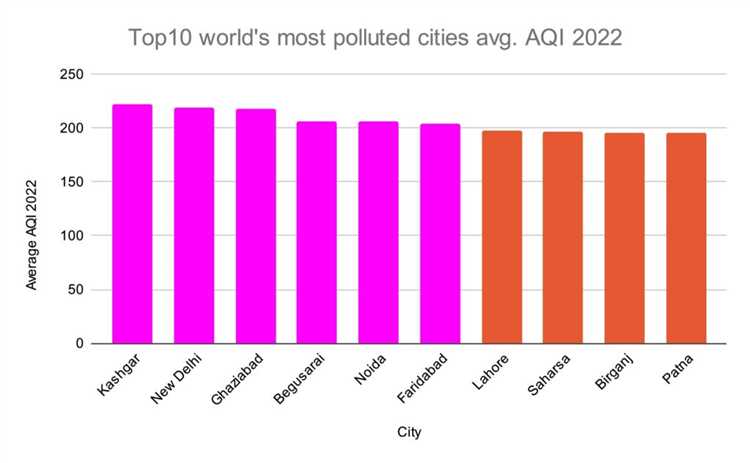
Poor air quality is linked to an increased risk of cardiovascular diseases. The fine particles present in polluted air can enter the bloodstream and cause inflammation, leading to the development of heart diseases, stroke, and high blood pressure. Long-term exposure to air pollution can also contribute to the progression of existing heart conditions, resulting in reduced overall cardiovascular health.
It is worth noting that the effects of pollution on health are not limited to the respiratory and cardiovascular systems. The harmful pollutants can also cause:
3. Neurological disorders: Air pollution has been associated with cognitive decline, memory problems, and an increased risk of developing neurodegenerative diseases like Alzheimer’s.
4. Cancer: Certain pollutants, such as benzene and formaldehyde, are known to be carcinogenic and can increase the risk of lung, bladder, and other types of cancer.
5. Skin problems: Exposure to pollutants can lead to skin allergies, irritations, and dermatological conditions.
6. Weakened immune system: Air pollution has been shown to suppress the immune system, making individuals more susceptible to infections and respiratory illnesses.
It is crucial to raise awareness of the harmful effects of pollution and implement measures to reduce pollution levels for the well-being and health of the global population.
Measures to Reduce Pollution
As pollution continues to be a major global concern, cities around the world are implementing various measures to reduce pollution levels. These measures aim to curb the emission of harmful substances and promote sustainable practices that can help combat pollution effectively. Here are some of the key measures being taken:
1. Promoting Renewable Energy Sources
One effective way to reduce pollution is by transitioning to renewable energy sources such as solar, wind, and hydropower. By promoting the use of clean energy, cities can decrease their reliance on fossil fuels, which are major contributors to air and water pollution.
2. Improving Public Transportation
Investing in efficient public transportation systems can significantly reduce pollution caused by vehicles. By providing convenient and affordable alternatives to private cars, cities can encourage people to opt for public transportation, thus decreasing the number of vehicles on the roads and lowering carbon emissions.
3. Implementing Strict Emission Standards
Enforcing strict emission standards for industries, vehicles, and power plants is crucial in reducing pollution. By setting limits on the amount of pollutants that can be released into the environment, cities can ensure that industries adopt cleaner technologies and practices, leading to a decrease in pollution levels.
4. Promoting Recycling and Waste Management
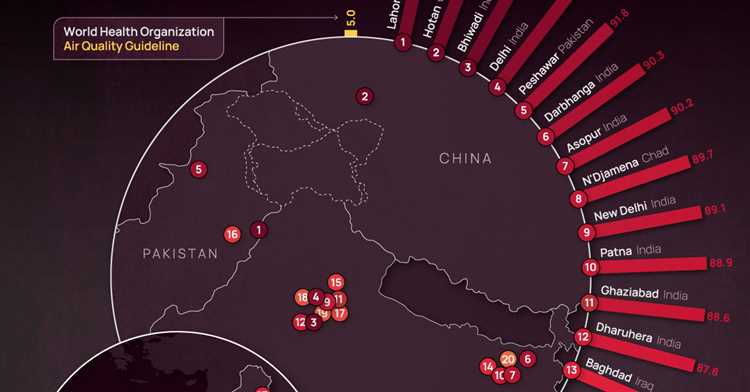
Effective waste management and promoting recycling can significantly reduce pollution caused by improper disposal of waste. Cities can implement comprehensive recycling programs, encourage residents and businesses to recycle, and invest in waste-to-energy facilities to minimize the amount of waste destined for landfills.
5. Creating Green Spaces
Creating and preserving green spaces within cities is another measure to reduce pollution. Trees and plants help absorb pollutants, improve air quality, and provide shade, reducing the urban heat island effect. Cities can implement urban greening projects and create parks and green corridors to enhance the overall environmental quality.
In conclusion, adopting these measures can play a crucial role in reducing pollution levels and creating healthier and more sustainable cities. However, it requires collective efforts from governments, industries, and individuals to implement and adhere to these measures effectively.
Efforts to Combat Pollution
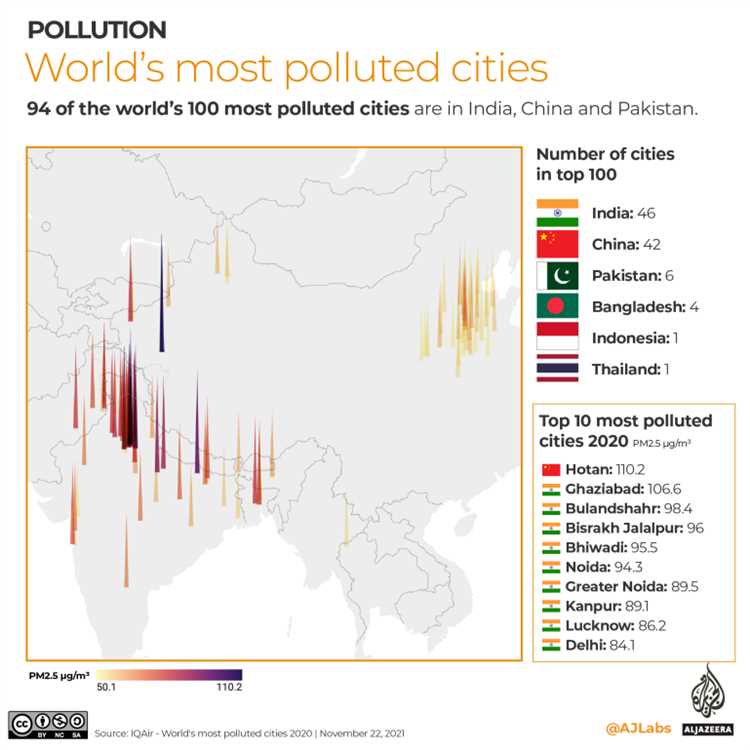
In the face of worsening pollution levels globally, cities around the world have been implementing various measures to combat this growing problem. These efforts aim to reduce greenhouse gas emissions, improve air quality, and promote sustainable development.
1. Improving Public Transportation
One of the most effective ways to reduce pollution in cities is to improve public transportation systems. By offering convenient, affordable, and reliable options for residents to leave their cars at home, cities can significantly decrease the number of vehicles on the roads. This not only reduces air pollution but also eases traffic congestion and promotes a healthier lifestyle.
2. Implementing Strict Emission Standards
Another important step in tackling pollution is through the implementation of strict emission standards for vehicles and industries. By enforcing regulations that limit the amount of pollutants released into the atmosphere, cities can significantly reduce their contribution to air pollution. This requires cooperation between governments, industries, and citizens to ensure compliance with these standards.
Furthermore, encouraging the use of cleaner energy sources, such as renewable energy, can help minimize pollution from power plants and other industrial facilities.
Efforts to combat pollution also extend to waste management practices. Cities are implementing recycling programs, waste reduction initiatives, and proper waste disposal methods to minimize the impact of waste on the environment.
In addition to these local measures, international cooperation is crucial in addressing global pollution issues. Collaborative efforts between nations can lead to the sharing of best practices, research, and technologies that can aid in fighting pollution.
In conclusion, combating pollution requires a comprehensive and multi-faceted approach. It requires the involvement and cooperation of governments, industries, and citizens to implement and enforce measures that promote a cleaner and healthier environment for future generations.
Future of the Most Polluted City
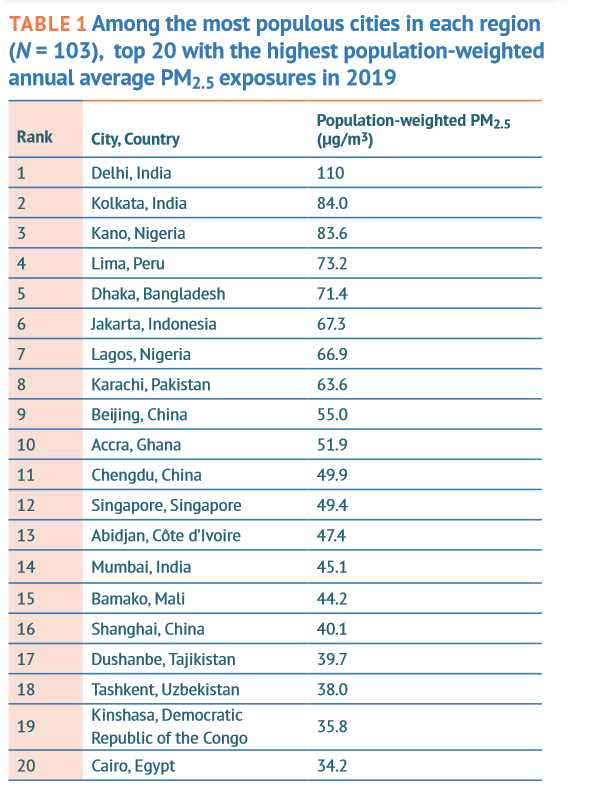
As the most polluted city in the world, the future for this urban center looks bleak. The city has long been grappling with severe air pollution, which poses serious health risks for its residents and contributes to environmental degradation.
Efforts to combat pollution in the city have been ongoing, but progress has been slow and insufficient. If effective measures are not taken soon, the situation is likely to worsen, putting the health and well-being of the city’s inhabitants at greater risk.
The Need for Immediate Action
To secure a healthier future for the most polluted city, immediate action is imperative. This requires the implementation of comprehensive policies and strategies aimed at reducing pollution levels and improving air quality.
Investing in sustainable transportation systems, such as electric vehicles and improved public transportation networks, can significantly reduce the city’s reliance on fossil fuels and decrease emissions. The promotion of renewable energy sources can also play a vital role in curbing pollution.
Collaborative Efforts and International Support
Addressing the pollution crisis in the most polluted city requires collaboration at various levels. Local authorities, government agencies, and communities must work together to develop and enforce strict regulations to control emissions from industries, construction sites, and vehicles.
International support and cooperation are also crucial in tackling this global issue. Sharing best practices and technologies can help the city adopt effective pollution control measures. Furthermore, financial assistance from developed nations can aid in implementing sustainable solutions.
By taking proactive measures and creating a united front against pollution, the most polluted city can pave the way for a cleaner and healthier future. With concerted efforts, it is possible to reverse the detrimental impacts of pollution and ensure a sustainable urban environment for generations to come.
Q&A
Which city is currently considered the most polluted in the world?
According to recent studies, the most polluted city in the world is New Delhi, India.
What are the main sources of pollution in New Delhi?
The main sources of pollution in New Delhi include vehicular emissions, industrial pollution, dust and smoke from construction sites, and crop burning in nearby areas.
What are the health effects of living in a highly polluted city like New Delhi?
Living in a highly polluted city like New Delhi can have severe health effects, including respiratory problems, heart diseases, and decreased lung function. It can also lead to an increased risk of developing asthma, allergies, and other respiratory infections.
What measures are being taken to address the pollution problem in New Delhi?
Several measures are being taken to address the pollution problem in New Delhi. These include implementing stricter emission norms for vehicles, promoting the use of clean energy sources, improving public transportation, and imposing restrictions on burning of waste and crop residue.
Are there any other cities in the world with high pollution levels?
Yes, apart from New Delhi, there are several other cities in the world with high pollution levels. Some of these cities include Beijing, China; Kabul, Afghanistan; and Dhaka, Bangladesh.
Which city is the most polluted in the world?
The city with the highest levels of air pollution in the world is currently New Delhi, the capital of India.
What are the main causes of air pollution in cities?
The main causes of air pollution in cities include industrial emissions, vehicle exhaust, burning of fossil fuels, and the use of solid fuels for cooking and heating.